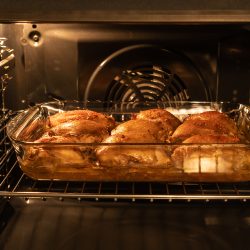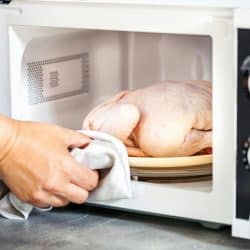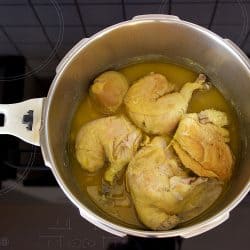When cooking, sometimes we are strapped for time. We need to get the food out quicker so, using a microwave is one way to get this done. However, you might have noticed a difference in texture. More specifically, does microwaving chicken make it rubbery? If that is what you are trying to find out, we have researched the issue and found some answers.
Unfortunately, microwaves do tend to make chicken rubbery. The reason this happens is that microwaving dehydrates the chicken. It cooks in minutes, but that comes at the cost of overcooking. The microwave cooks the chicken leaving it with less moisture inside than if you prepared it on a stove. Of course, with some techniques, you can prevent the rubbery texture that comes with microwaving.
Now that you know the reasons behind rubbery chicken, you may be wondering how you can prevent it from happening. As mentioned, some techniques can aid in cooking chicken properly. The answer may have left you wanting more. If more answers are what you want, keep reading ahead.
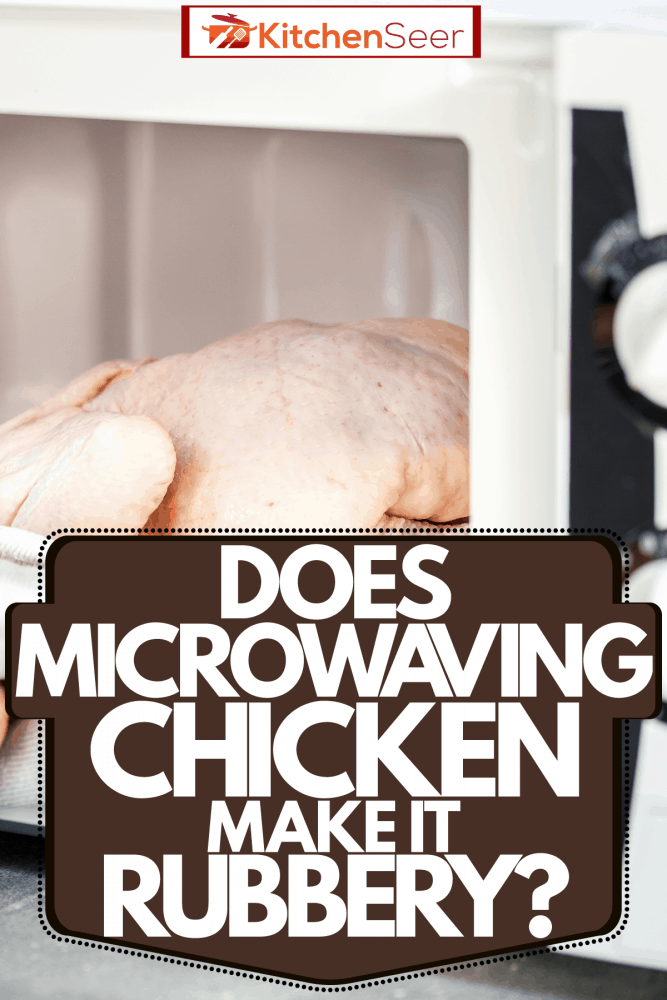
Why Does The Microwave Make Food Rubbery?
To understand why a microwave makes food rubbery, you have to look at the process food undergoes in a microwave. So, how exactly does it work? It works through a form of nonionizing electromagnetic radiation. This process may sound scary, but this form is not enough to cause cellular damage.
It sends electromagnetic radiation waves to heat your food. Water absorbs the waves causes molecules to vibrate at a quick rate. The water (moisture) in your food is what heats up. Since water is the main target, the loss of moisture causes your food to become rubbery. Water reduces at a rapid rate because of how quickly it heats your food.
How Do You Microwave Chicken Without It Getting Rubbery?
For some people, no matter the temperature or the brand of the microwave, reheating chicken turns the meat rubbery and dry. If this sounds familiar to you, then there are a few tips you can use to microwave chicken without getting it rubbery. The following techniques work for both cooking and reheating chicken in the microwave. For both situations, you will need the following materials:
- Deep dish
- Broth or water
- Olive oil
- Microwave-safe wrap/Silicone Lid
Click here to see this plastic wrap on Amazon.
To reheat the chicken, you will want to place larger pieces at the edge of the dish and the smaller ones in the middle. To avoid losing too much moisture, adding a few tablespoons of water or broth and a drizzle of olive oil is necessary so it will not come out dry and rubbery. Lastly, another measure to avoid excess moisture loss is wrapping or covering the top of the dish with a lid or wrap.
Click here to see this silicone lid on Amazon.
One important thing to note is that both the dish and the plastic you are using need to be microwave-safe. If these utensils are not microwave-safe, microwaving plastic material can leach chemicals into your food. You can go with an alternative like a silicone lid instead of plastic wrap if you are not comfortable using plastic. However, make sure you do not completely cover the dish to allow some heat to escape.
Additionally, if you are going with plastic, the FDA states that it should not touch your food. When it comes in contact with food, you run the risk of the plastic wrap melting. As mentioned, allow an area for venting so excess steam can escape.
Microwaving raw chicken has the same steps above. The few additional steps to consider start with pounding the chicken with a mallet to make it thinner and even in thickness. Add salt and pepper along with a shallow amount of water. Cook it on a high setting for 4-5 minutes. If you are reheating, microwave the chicken for 2 minutes.
Is It Okay To Microwave Raw Chicken?
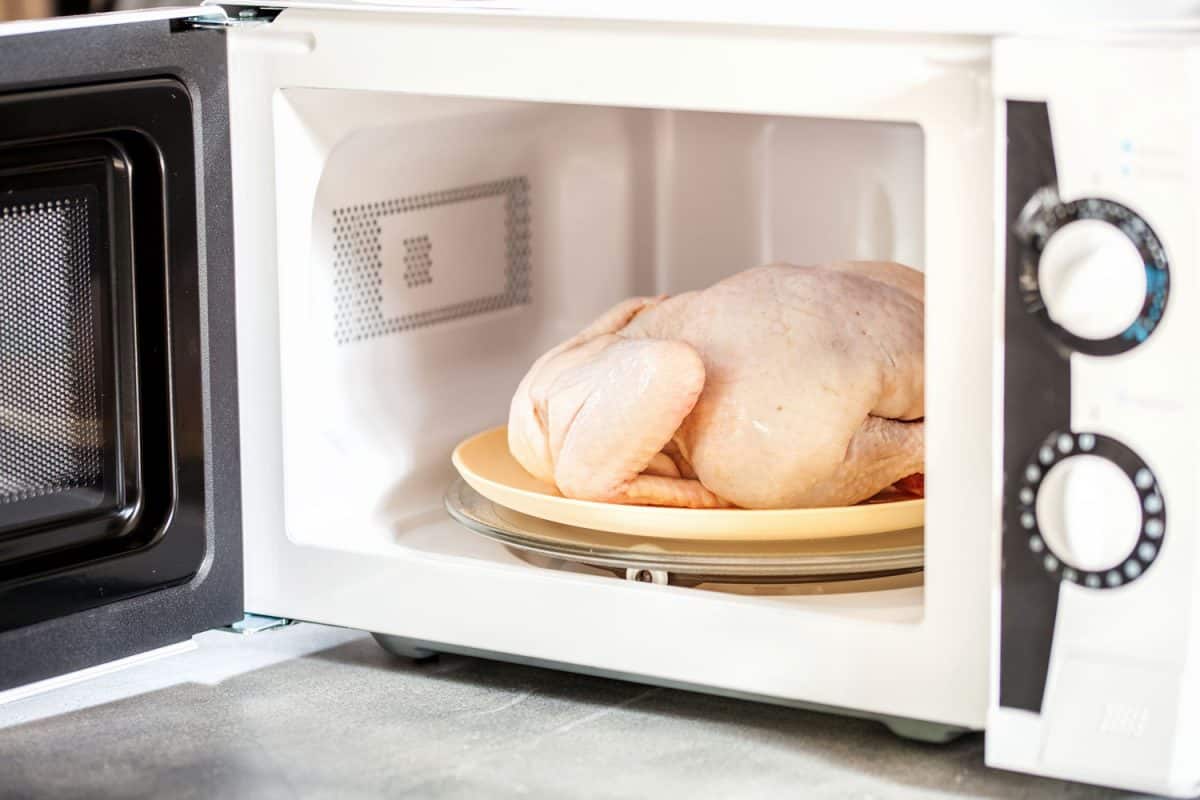
Yes, there are no problems with microwaving raw chicken. However, there are a few reasons why some people would not microwave chicken like concerns over food poisoning, uncooked chicken, etc. When done right, microwaving raw chicken can work. Take the following things into consideration if you are planning on microwaving raw chicken.
- Thaw the chicken beforehand. Instead of doing it on the kitchen counter, thaw the chicken in the refrigerator. This process will slow down the reproduction of bacteria.
- Clean your hand and the utensils you use to prevent cross-contamination. For more information on what we mean by utensils, click here.
- Cover the chicken in a deep dish to ensure a lot of moisture does not escape.
Is It Okay To Eat Rubbery Chicken?
As long as you cook the chicken throughout, there is no problem with eating rubbery chicken. However, just because you can do something does not mean you should. Rubbery chicken might satisfy your appetite but it is harder to chew and tastes awful. Look-wise it will have a yellowish hue that would not look too appetizing.
How Do You Know When Chicken Is Fully Cooked?
Whether you are cooking the chicken in the microwave, oven, or on the stove, the following tips are a few ways to find out if the chicken is fully cooked or not.
Use A Food Thermometer
Click here to see this meat thermometer on Amazon.
Using a food thermometer is one of the easiest ways to check if the chicken has cooked throughout an even area. However, to ensure you get a good reading, stick the thermometer in the thickest part of the chicken. This process is essential to check if you have cooked the inside. The internal temperature of a fully cooked chicken is 165 degrees Fahrenheit.
When checking the temperature of a chicken with bone, avoid touching the bone with the probe. Bones are a heat conductor. It can give you a false reading.
Cut The Chicken
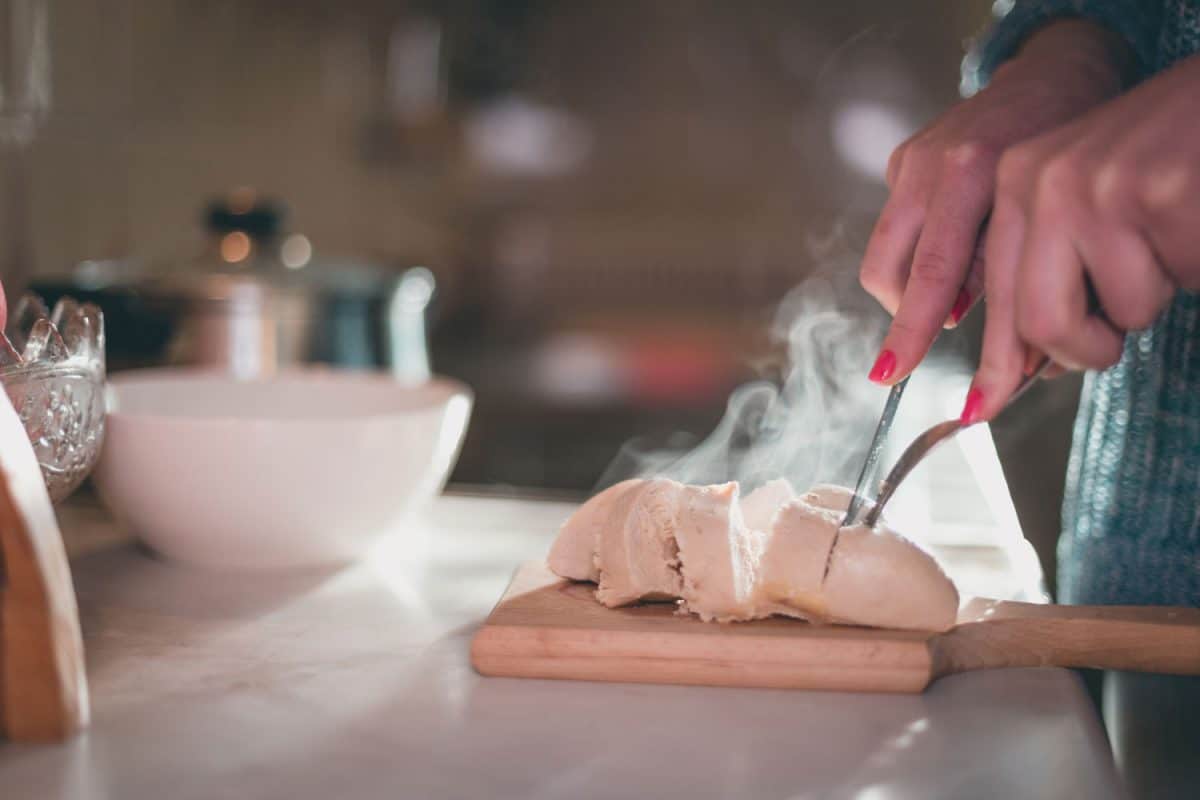
Next up, cutting a portion of the chicken is as simple as it sounds. Cut a bit of the chicken to see if it is cooked or not. A fully cooked chicken looks white from the inside, while an undone chicken has a pinkish hue.
Check The Size
For the last method, you need to be observant. During the cooking process, meat tends to shrink in size. So, if the chicken looks smaller than it was before, then chances are the chicken is cooked. However, we do not recommend this method as it is impossible to find the internal temperature. It could work well with a combination of the methods mentioned above.
How Long To Microwave Chicken?
Microwaving raw chicken for 15-20 minutes on a medium heat setting is enough to cook it. Alternatively, you can cook raw chicken on a high setting for 4-5 minutes. To reheat leftovers, microwave it for 30 seconds to 1 minute.
However, to ensure you spread heat evenly, you should pound the chicken to make them thinner. To ensure it cooks well, check the inside and reheat as needed. Additionally, to avoid a rubbery texture, fill a dish with water and place the chicken in. Use the tips mentioned above to check if the meat cooks properly. The internal temperature should reach 165 degrees Fahrenheit once it is out of the microwave.
Microwave or Stovetop?
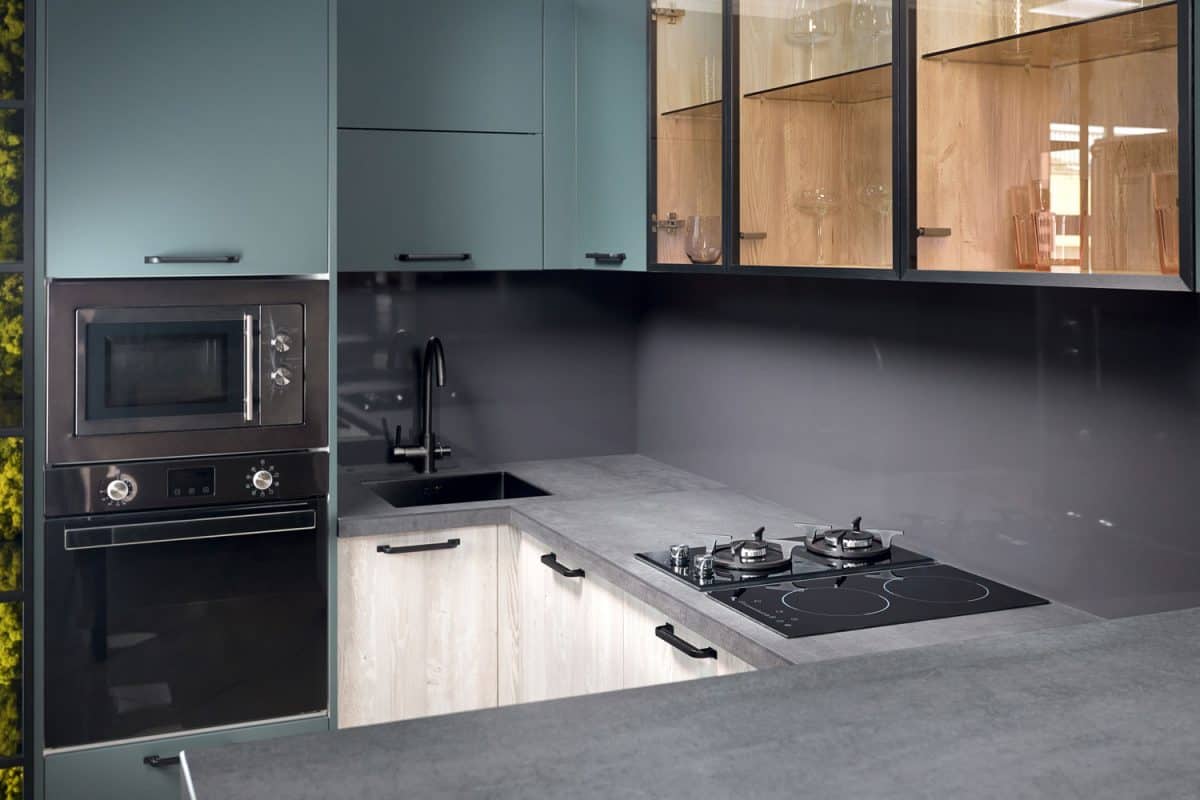
There is a common concern about the process food undergoes when you microwave it. One of the main issues is that it will destroy the nutrients present. The good news is that microwaving does not affect nutrient content as much as you might think. Nutrient loss is the same as if you had cooked food on a stovetop. However, how much nutrients you lose will depend on the type of food you cook and how you prepare it.
For chicken, there will not be many nutrients lost. The second issue people have with microwaves is over the concern that it uses radiation to heat food. Will it harm you? Fortunately, no, it will not. It uses a different form of radiation that we mentioned above.
Microwaves also have some metal shields as protection to prevent radiation from leaving the microwave. Lastly, as you may have already experienced, sometimes microwaves do not heat food properly. Uneven cooking is a common issue. To prevent uneven cooking, you should use methods such as putting the chicken in a covered dish, pounding the meat thinner, or having a rotating turntable for even heat distribution.
If you are searching for a good microwave, click here to see some of our top picks.
Final Takeaway
Cooking is a delicate process. You need to make sure you are following the proper steps to get a good texture. Microwaves make this slightly harder due to the process it uses to heat food. Hopefully, with the information above, you can avoid the hassle of chewing on rubbery chicken. We hope we cleared up some misconceptions about microwaving too.
Until next time!







